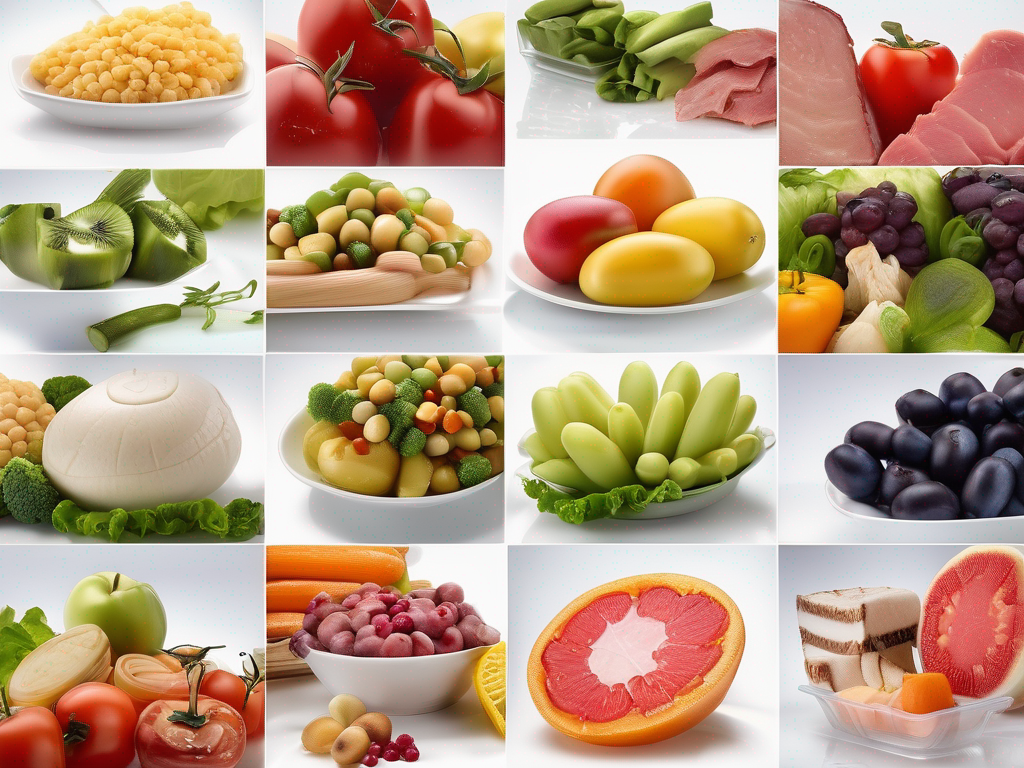
Maximizing Freshness: Properly Storing Unopened Grape Juice in the Refrigerator
Get Your Free Food Safety Cheat Sheet
30 most common foods with instant answers. Print it and stick it on your fridge—completely free!
Maximizing Freshness: Properly Storing Unopened Grape Juice in the Refrigerator
In today's blog post, we will discuss the best practices for storing unopened grape juice in the refrigerator to ensure maximum freshness. Whether you enjoy a glass of grape juice in the morning or use it as an ingredient in recipes, proper storage is key to maintaining its flavor and quality. Let's delve into the details of how you can keep your grape juice fresh and delicious.
Why Proper Storage Matters
Proper storage of grape juice is essential for several reasons:
- Preserving Freshness: Storing grape juice correctly helps maintain its flavor, aroma, and nutritional content.
- Preventing Spoilage: Improper storage can lead to fermentation, mold growth, or off-flavors in the juice.
- Food Safety: Following storage guidelines reduces the risk of microbial contamination and foodborne illnesses.
Now, let's explore the steps you can take to store unopened grape juice in the refrigerator for optimal freshness.
Selecting the Right Refrigerator Storage
When it comes to storing unopened grape juice, the refrigerator is your best ally. Here's how you can make the most of your refrigerator space for storing grape juice:
Temperature Control
- Set the refrigerator temperature between 35-40°F (1.6-4.4°C) for optimal storage conditions.
- Avoid placing grape juice near the refrigerator door, as temperature fluctuations can affect its quality.
Shelf Placement
- Store grape juice on a middle shelf rather than in the door compartments to maintain a consistent temperature.
- Keep the juice away from strong-smelling foods to prevent flavor transfer.
Proper Packaging and Handling
The packaging of grape juice plays a crucial role in maintaining its freshness and quality. Here are some tips for handling and storing grape juice containers:
Original Packaging
- Keep the grape juice in its original, unopened container to maintain its integrity.
- Check for any signs of damage or leakage before storing the juice.
Air-Tight Sealing
- Ensure that the container is tightly sealed to prevent air exposure, which can lead to oxidation.
- If using a resealable bottle, seal it tightly after each use to preserve freshness.
Tips for Extending Shelf Life
To extend the shelf life of unopened grape juice, consider the following guidelines:
Use-By Date
- Check the expiration or "use-by" date on the packaging and adhere to it for the best quality.
- Consume the grape juice before the expiration date to enjoy its full flavor.
Rotation System
- Practice a "first in, first out" rotation system to use older grape juice before newer purchases.
- Label the containers with the purchase date to keep track of freshness.
Monitoring and Quality Checks
Regular monitoring of the grape juice can help you identify any signs of spoilage or quality degradation. Here's what you can do:
Inspection
- Check the appearance, color, and aroma of the grape juice for any changes.
- Discard the juice if you notice off-putting odors, discoloration, or unusual textures.
Temperature Checks
- Use a refrigerator thermometer to ensure that the storage temperature remains within the recommended range.
- Adjust the temperature settings if needed to maintain freshness.
Conclusion
Proper storage of unopened grape juice in the refrigerator is essential for preserving its freshness and quality. By following the tips outlined in this guide, you can enjoy delicious grape juice that is safe to consume and free from spoilage. Remember to prioritize temperature control, packaging integrity, and regular quality checks to make the most of your grape juice storage. Cheers to a refreshing glass of perfectly stored grape juice!
Authoritative Food Safety References
These agencies and university labs inform every tip and health precaution we publish.
USDA FoodKeeper – Cold Storage Guidelines
Official refrigerator, freezer, and pantry timelines maintained by the U.S. Department of Agriculture.
Visit USDA FoodKeeperFDA Produce Safety Rule & Grower Guidance
Field-to-fridge handling practices that prevent contamination of fruits, vegetables, and leafy greens.
Visit FDA Produce SafetyCDC Foodborne Illness Prevention Hub
Surveillance-backed guidance on pathogens, symptoms, and steps to reduce foodborne illness risk.
Visit CDC Food SafetyUC Davis Postharvest Technology Center
University research detailing optimal storage atmospheres for produce after harvest.
Visit UC Davis PostharvestPenn State Extension – Home Food Preservation & Safety
Peer-reviewed extension bulletins on safe canning, chilling, and reheating practices.
Visit Penn State ExtensionGet Your Free Food Safety Cheat Sheet
30 most common foods with instant answers. Print it and stick it on your fridge—completely free! Want more? Upgrade to the complete guide with 70+ foods.
Scan your food directly and get instant safety info using our AI-powered camera feature.